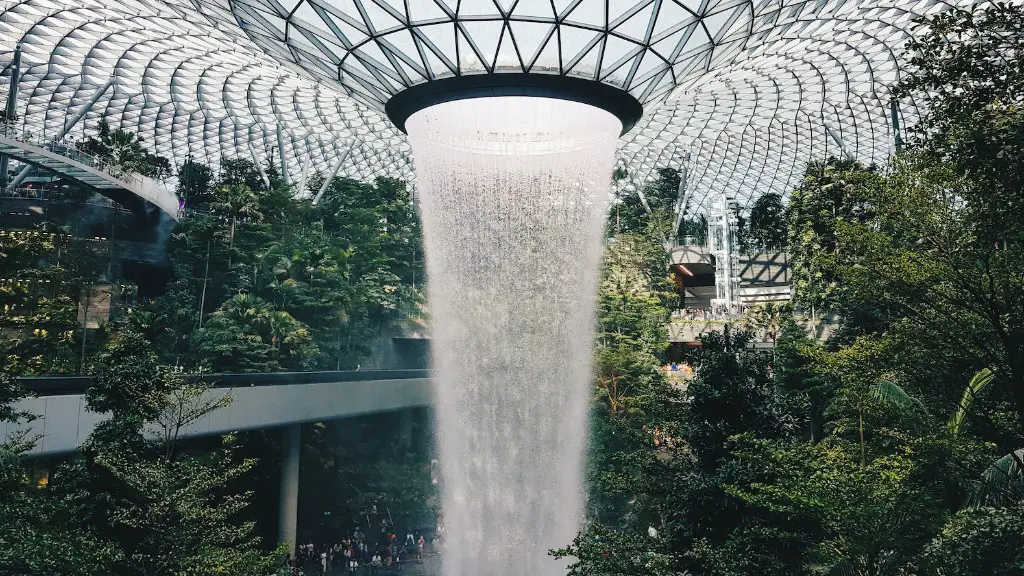Interior Design Vs Architecture
It’s an enduring debate – which is best, interior design or architecture? While the differences and advantages of either pursuit can be fascinatingly varied it is clear that each discipline has a unique set of skills, expertise and qualifications which should be considered and appreciated.
To start, interior design focuses on making adjustments and alterations to the interior environment with considerations for furniture, lighting, colours, materials, textures and more. On the other hand, architecture is a much broader discipline which involves the overall design and planning of a building, from how it stands majestically in its environment to how it serves and supports its inhabitants.
Interior design is often undertaken to improve how a space functions and is typically more cost-effective than architectural intervention. For example, a room can be easily repurposed for another use with creative furniture placement or wall colour change. It should also be noted that because interior design projects are often smaller, highly experienced design professionals can be more easily accessed and appointed to a project.
When it comes to architecture, while it is true that the overall design, appearance and layout of a building must all be carefully considered, Architects need to also understand physics and engineering. After all, a building must remain structurally sound, able to withstand the test of time and the local environment. Architects develop an understanding of engineering and physics to understand exactly what components will be needed and how to create spaces which are not compromised by the weight and elements of a building.
Both disciplines involve an understanding of form, function as well as aesthetics and take many years of practice to cultivate. While both approaches are creative in terms of their styling, design and ornamentation, architecture is more often concerned with emphasising form whilst interior design takes on more of a functional approach to a project.
Interestingly enough, both fields often not only work in tandem but also require each other in order to meet the user requirements. For example, an architectural team may design an open plan kitchen-living room and then it will be up to the interior designer to furnish it all in a way which meets the needs of a family or a client.
History of Interior Design
Interior design as a profession has been around since the 17th century but only began to be addressed in academia by the start of the 20th century. One of the major milestones in the development of interior design as a field was when Hudson University of New York established an interior design program in 1906. It was a unique interdisciplinary programme which engaged with art, architecture and even design psychology.
It was during this period that the profession began to develop a recognisable aesthetic and understanding of what design should be. Designers were better able to make decisions about fabric selection, furniture quality and more from a greater understanding of the crafted environment.
Architectural Education
To become an architect usually involves completing a four-year Bachelor of Architecture degree. This program will provide students with the basic knowledge and understanding of design philosophy, history, trends, management of projects and engineering. Depending on the program, many undergraduate courses also involve the study of practices related to urbanism, landscape design and the engineering of structures.
Afterward, aspiring architects may opt to pursue an advanced degree in architecture, such as a Masters of Architecture. A candidate may develop their skills in process and aesthetic design and learn more about the research and planning of projects.
Art and Design Fusion
The most interesting aspect of interior design is the fusion of art with design. Interior design is a creative endeavour which relies heavily on colour, texture, shape and form. Quality designers must have an eye for detail and aesthetic pleasure as well as an understanding of the way lives are lived and utilised in space. It is this very combination of art and logic that allows quality designers to be successful.
Architecture is an amalgamation of many fields and techniques, including engineering and physics – allowing a building to be created to meet user requirements and serve its purpose.
The bottom line is that both disciplines require an equal balance of careful planning, design and execution. It is only by working collaboratively with experts in the field that a project can be envisioned, planned and completed.
Analysis and Synthesis
In order to become a successful interior designer or architect, analysis and synthesis skills are essential. This involves taking the initial idea and developing it by assessing the different aspects of the project, the desired end results, user requirements and any legal or environmental factors. From here, the idea needs to be synthesised into something tangible.
In architecture this could involve understanding the laws of physics and how to incorporate them into building design to create a safe and secure structure which looks impressive and is inviting. For interior design this could involve formulating an interesting and creative concept for an interior which meets user requirements, is safe and is aesthetically pleasing.
Problem Solving and Ideation
Both interior design and architecture involve problem-solving and ideation. Projects are rarely straightforward and often require the ingenuity and imagination of a designer or architect to think of solutions which otherwise may not have been considered.
Designers and architects need to have an understanding of the brief and a good eye for detail. Professionals in this field should be able to problem solve, think critically and be prepared to transpose a concept into reality. It is this complex juggle between dreaming up amazing design ideas, considering practical factors and making them all harmonise in a safe and liveable environment that is the true talent of these fields.
Environmental Considerations
In the 21st century, the movement towards sustainability and environmental awareness has become increasingly important. Architects and interior designers need to start being conscious of the impact their designs and creations will have on the environment. This involves considering everything, from the way a building has been constructed and the materials chosen, right through to the energy requirements of a structure or the ventilation and lighting of a room.
In order for today’s designers to create buildings with a minimal environmental footprint, it is important that they understand the environmental components of a project and how to build intelligently.
Education and Training
As the two professions cannot be considered similar, interior designers and architects must be properly trained and educated in the relevant field. In the United States, interior designers must meet strict qualifications including completion of a course of study, an apprenticeship and examination. In some countries, like the United Kingdom, interior designers must become certified and registered with a professional body such as The British Institute of Interior Design.
On the other hand, Architects must meet a set of qualifications which include successfully completing a degree and licensure examination. There are many routes to become a qualified architect, and while qualifications vary from country to country, in most cases, a site visit and training is also required.
Location and Environment Impact
Location and environment can have a profound impact on a project. Professional design professionals must have a clear understanding of the environment and the various elements which need to be considered. This can include anything from the climate and the culture of a specific location, the building’s surroundings, the requirements of its inhabitants and the area’s specific laws, restrictions and regulations.
It is up to the designer to take the environment into consideration and to factor in the amount of natural light, ventilation and any regulatory factors. This is why it is so important for architects and interior designers to be skilled at environmental analysis and also understand the local culture, rules and regulations.
User Requirement Analysis
Before taking on any project, designers and architects must analyse the user requirements to ensure their work is tailored to the specific needs and wants of the client. This can involve anything from the number of people using a space, the activities that will take place, the room size and orientation or even the budget or material selection.
Understanding the user requirements is critical for the success of a project, as the designer or architect must ensure that the end product meets the user’s needs. It is up to the design experts to combine their understanding of the user requirements with their creative and engineering skills to deliver a project which is successful and meets the expectations of the client.





